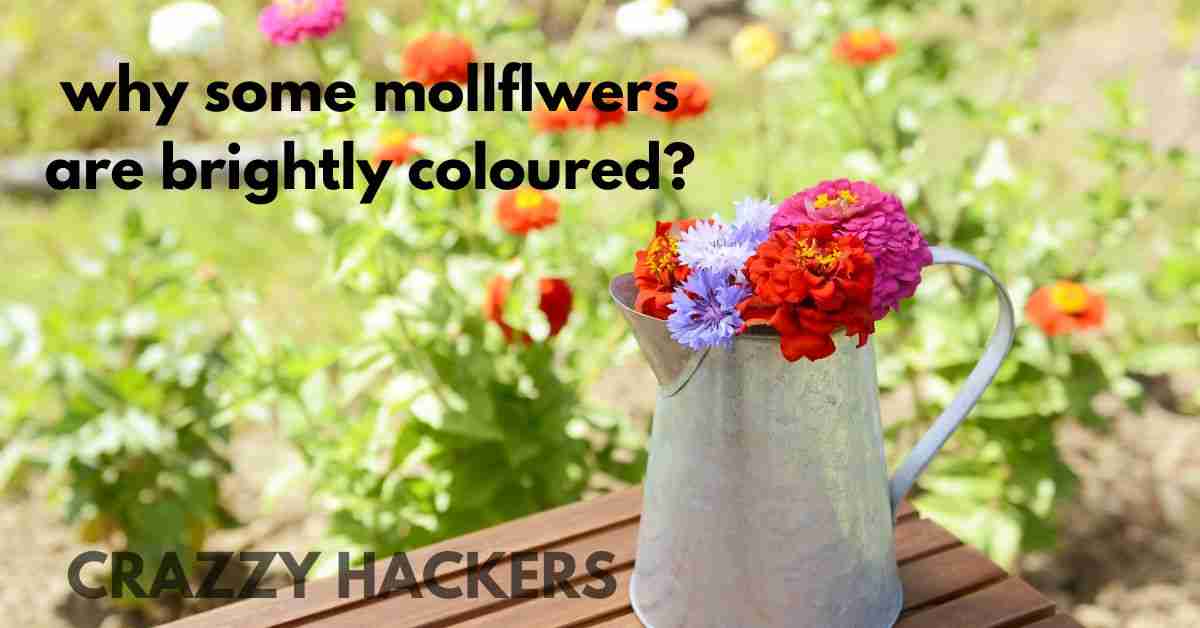Introduction
In the enchanting tapestry of the botanical world, the phenomenon of vibrant mollflowers stands as a testament to nature’s captivating artistry. The allure of these blossoms extends beyond mere visual appeal, inviting us to unravel the intricate reasons behind their glorious colors. As we embark on this journey, the kaleidoscope of hues becomes a portal into the evolutionary, chemical, and ecological complexities that shape the vibrant identity of moll-flowers.
Evolutionary Adaptations
Within the grand narrative of evolution, mollflowers have undergone a remarkable journey, sculpting their appearance into a spectrum of colors that transcends mere aesthetics. The radiant pigments adorning these blossoms are not merely decorative but evolutionary adaptations finely tuned over millennia. These hues serve as silent communicators, forging alliances with pollinators and embodying a living history of survival strategies etched in the genetic code of these floral marvels.
Chemical Compounds
The intricate dance of colors within mollflowers unfolds at the molecular level, where an orchestra of chemical compounds orchestrates a symphony of pigments. Anthocyanins, carotenoids, and flavonoids collaborate in a biochemical ballet that mesmerizes the observer and reveals the sophisticated language these botanical wonders speak. Through this chemical poetry, moll-flowers articulate their genetic identity and ecological purpose.
Environmental Influences
As a masterful painter, nature applies its brush strokes on the canvas of mollflower petals. The vivid colors are not only a result of genetic predispositions but also dance to the rhythm of environmental influences. Sunlight, soil composition, and climate intricacies converge to mold the chromatic expression of these blossoms, highlighting the harmonious interplay between nature’s palette and the botanical subjects it adorns.
Biotic Factors
In the ballet of biodiversity, mollflowers take center stage, engaging in a dance with their biotic counterparts. The vivid colors are not arbitrary; they are an invitation, a visual feast designed to attract specific pollinators. This mutualistic relationship between flora and fauna transcends the ornamental, delving into the profound interconnectedness that defines ecosystems and the delicate threads that sustain life.
Human Cultivation
As stewards of nature, humans have woven their influence into the vibrant tapestry of mollflowers. Through selective breeding and cultivation practices, we have not only intensified existing colors but have also introduced novel shades to these botanical palettes. Though sometimes transformative, the human touch is a testament to our role as co-creators in the ongoing saga of floral evolution.
Camouflage and Warning Signs
Nature’s palette extends beyond aesthetics; it becomes a language of survival for some mollflowers. The vivid colors serve as botanical Morse code, signaling warnings or adopting camouflage strategies. This intriguing aspect of coloration unfolds as a survival tactic, a visual narrative inscribed in the petals of these flowers in the age-old struggle between predator and prey.
Geographic Variations
Across diverse landscapes, mollflowers gracefully adapt their hues to the geographical symphony that unfolds around them. From the verdant rainforests to the arid deserts, these botanical chameleons reflect the regional nuances of their habitats. The geographic variations in coloration not only embellish the floral panorama but also offer insights into the adaptive resilience of these remarkable plants.
Impact on Ecosystems
The vibrant hues of mollflowers echo far beyond their blooms, Resonating through the intricate ecosystems they inhabit. As contributors to the delicate balance of biodiversity, these blossoms play crucial roles in supporting various species, shaping habitats, and influencing the dynamics of the ecosystems they call home.
Conservation Considerations
In the face of environmental challenges, conserving brightly colored mollflowers becomes a pressing concern. Preserving these botanical treasures is an endeavor for aesthetics and a commitment to safeguarding the intricate ecological relationships interwoven within their radiant petals. Conservation efforts stand as a pledge to protect the biodiversity that these vibrant blooms represent.
Scientific Research
Beyond their visual splendor, mollflowers beckon scientists into the realms of genetics, biochemistry, and ecology. Researchers unravel the mysteries encoded in the DNA of these blossoms, deciphering the biochemical pathways that produce their colors and exploring the ecological relationships that define their existence. Scientific inquiry transforms the vivid hues into gateways for deeper understanding and appreciation.
Popular Brightly Colored Mollflowers
Nature’s gallery features an array of botanical masterpieces, each with a unique story. From the regal tulips and flamboyant orchids to the humble daisies, the world of brightly colored mollflowers is a diverse and captivating anthology. Exploring the narratives behind these popular blooms enriches our understanding of the botanical marvels that grace gardens and wild landscapes alike.
Gardening Tips
A spectrum of gardening tips unfolds for those captivated by the allure of cultivating these living rainbows. Understanding the nuanced needs of brightly colored mollflowers becomes a horticultural journey involving soil, sunlight, and watering considerations that mirror the delicate dance between human care and botanical expression. These tips serve as a guide for enthusiasts eager to nurture the vibrant beauty within their green sanctuaries.
Sustainable Practices
In the pursuit of cultivating gardens adorned with vibrant hues, the importance of sustainable practices becomes paramount. Balancing the desire for colorful blooms with ecological responsibility becomes an art form, encouraging gardeners to weave sustainability into their horticultural endeavors. The cultivation of brightly colored mollflowers becomes not only a personal joy but also a contribution to the broader tapestry of environmental stewardship.
Conclusion
As we conclude our exploration of brightly colored mollflowers, we find ourselves immersed in nature’s beauty and enriched by the profound tales woven into their petals. The kaleidoscope of hues reflects not just the whims of evolution but the intricate ecological and human relationships that define the vibrancy of these botanical wonders. In contemplating the radiant palette of moll-flowers, we are beckoned to appreciate their aesthetic brilliance and the deeper symphony of life that resonates within each bloom.






